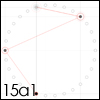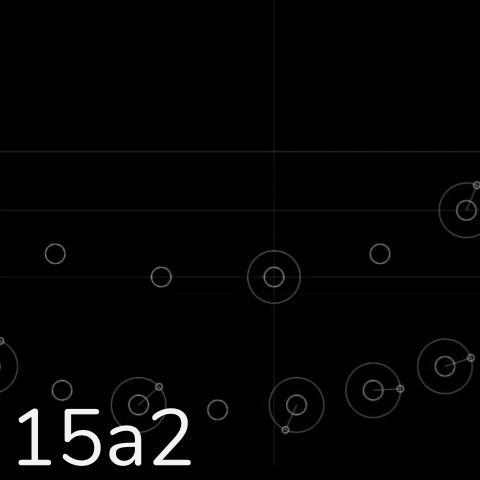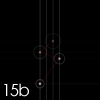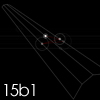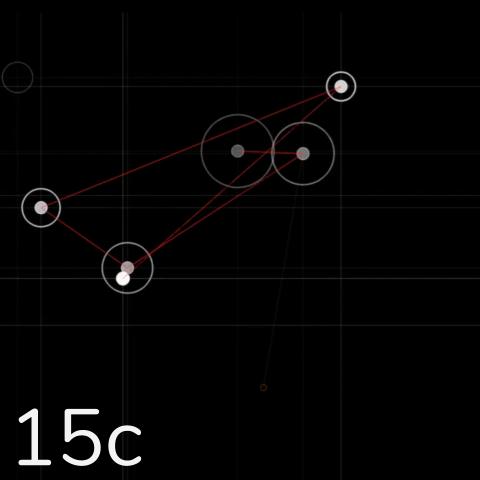Study no. 15a [for Pauline Oliveros] is the first in a series of animated scores that use the convergence notational approach. This type of animated notation is very effective at precisely indicating moments of attack, and easy to understand and realize.
Performance Instructions
For 15 players [clapping and vocalizing].
Players should stand facing the projected score, arranging themselves relative to their assigned event node.
Each time a red circle converges on a player's event node, clap once. Clap quality (loud, quiet, flat, cupped, etc.) should be varied often.
Each time a small circle appears at 12 O'Clock on a player's respective circle and begins to rotate, sing a tone until it has completed one full revolution. Pitch and dynamic envelope are open.
One vocalization suggestion is that each player pick a pitch that is not already being sung, start quietly, crescendo to MF by 6 O'Clock, and decrescendo to nothing by 12 O'Clock. Other versions can be determined before performance. Use 'ah' or 'oh'. Pitch should not change during a revolution, but may change on subsequent revolutions.
Percussion instruments may be substituted for clapping.
Duration: 10 minutes or more.
Study no. 15a was composed for Pauline Oliveros' Deep Listening seminar at the Rensselaer Polytechnic Institute, Spring 2013, inspired in no small part by Oliveros' music and writings, and our time spent in conversation.
If possible, the animated score should be projected for both the performers and audience to see. If this is not possible, one or more monitors can be used.
Ryan Ross Smith, Spring, 2013.
If you would like a copy of this animated score for performance, or have any questions about the animated notation used in this piece, feel free to get in touch! My contact information can be found here.
